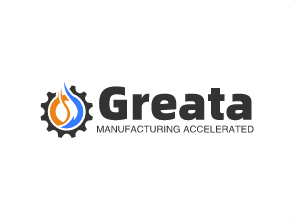CNC Machining Services
Custom CNC Machining Parts in Plastic and Metal
Delivery in as fast as 3 days
- 1 off CNC Prototype
- 100K+ Mass Production Machining
- Tolerance as tight as ±0.01 mm
CNC machining starts with a computer, on which designers prepare a part using CAD (Computer-aided Design) software. This digital part is then converted into a format that can be recognized by a CNC machine.
Instructions are sent to the CNC machine in the form of “G-Code” after which the machine can start cutting.
Most CNC machines have a “worktable” and work holding device to keep a block of material — known as the “workpiece” — in place. The worktable may or may not move, depending on the style of the machine.
When machining starts, the cutting tool makes contact with the workpiece, cutting away layers of material. The tool and/or workpiece is moved and/or rapidly rotated according to the G-Code instructions so that cuts are made in exactly the right places until the part is finished.
Different types of CNC machine
CNC machines include CNC mills, CNC turning machines (or lathes), CNC routers, and Electrical Discharge Machining (EDM) machines.
CNC mills have rotating cutting tools that are moved to different areas of the workpiece to make cuts and can be used to make many different pats. CNC lathes work the other way, rotating the workpiece against a stationary cutting tool, and are used to make cylindrical parts.
CNC routers are similar to CNC mills, but have less power and cannot cut the hardest materials. They can, however, be faster than CNC mills.
EDM uses electrical discharges (sparks) instead of a sharp cutting tool to cut material. No physical contact is made between the tool and the workpiece.
CNC machines are often defined by their number of axes. More axes mean they can move their tool and/or workpiece in a greater number of ways, giving greater cutting flexibility and the ability to make more complex parts in a shorter time.
Alien features makes your process easier
Lid est laborum dolo rumes fugats untras. Etharums ser quidem rerum facilis dolores nemis omnis fugats vitaes nemo minima rerums unsers sadips amets. Fugats vitaes nemo minima rerums unsers sadips amets.
why select CNC
CNC machining is a fast, accurate and versatile solution for making end-use plastic and metal parts in any quantity, without the need for investing in hard tooling or expensive set-ups. No matter how simple or complex the parts.
Highly Customizable for what material
There’s a wide range of materials that can be used in CNC machining – you can use such as aluminum, steel, brass, copper, titanium, as well as rigid plastics. Reach out to learn more about the types of materials that could be used.
what is high tolance for CNC
is known as one of the best CNC machining companies in China in terms of quality, speed, and customer service. With high-quality CNC machines, we can easily achieve +/- 0.02mm of tolerance and can even get within +/- 0.01mm. But keep in mind that it can have an impact on the cost.
Overview: What’s CNC Machining?
We machine custom parts for customers in multiple plastic and metal materials, from rapid prototypes,
low-volume production to mass production orders.
How CNC machining works
Regardless of the manufacturing process used to create the end-use part, CNC machining is widely used by designers as a means of creating early and late-stage prototypes with short turnarounds times. CNC prototyping allow designers to rapidly iterate ideas without tooling costs or waiting times. It is one of the best ways to create concept model and function prototype to verify the design. Compared with other rapid prototyping methods, rapid CNC machining allows us to get tight tolerance prototypes in real materials fast.
CNC Prototyping is the preferred option to bring new design life among the other rapid prototyping methods, unless the products are designed for 3D printing or other methods only.
